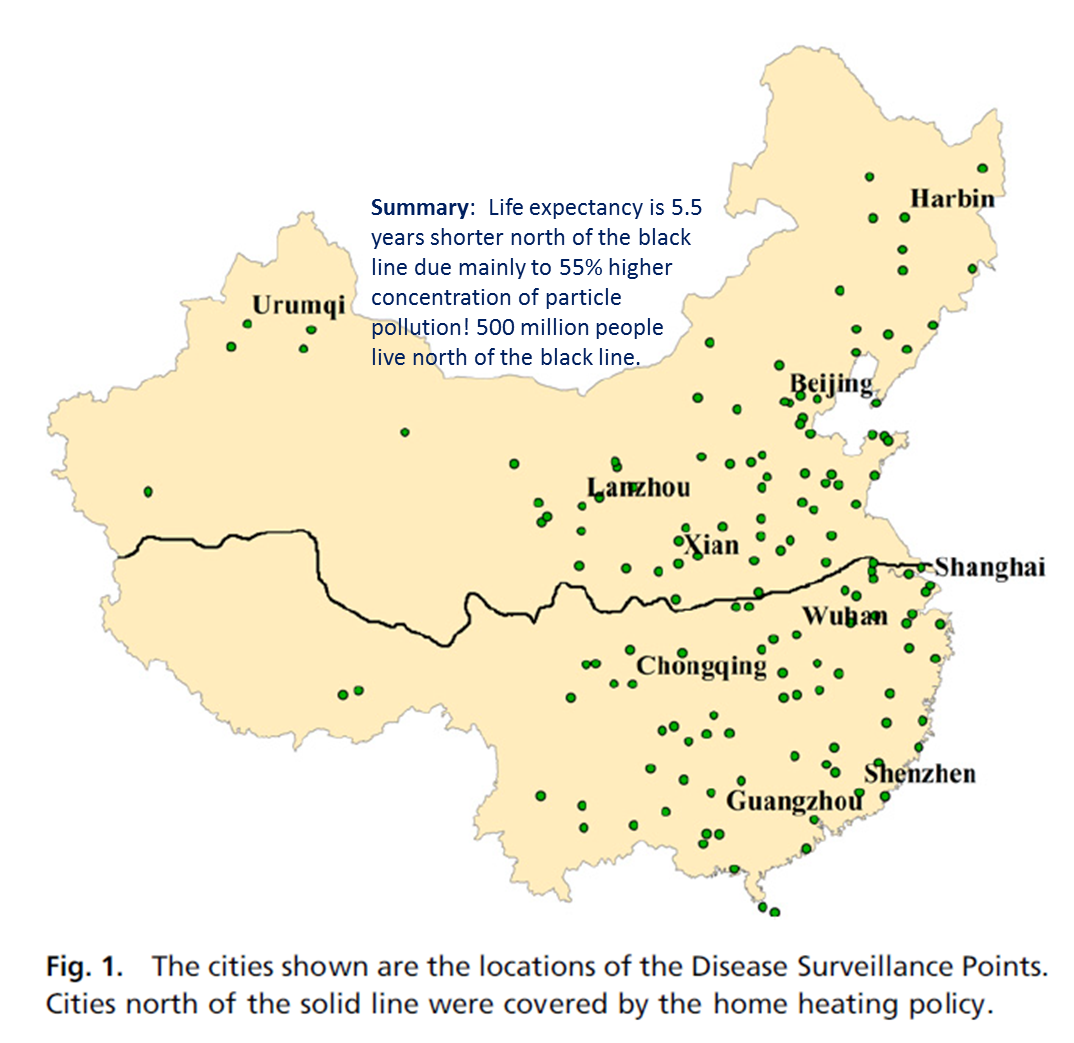Shockingly little has been published in the peer-reviewed literature about the air pollution in China, although there has been plenty of press coverage. I talked a little bit about the US Embassy twitter data and how fires polluted the air over Beijing*. The health impacts of the exposure of humans to sustained levels of unhealthy or hazardous air pollution levels is widely expected to increase mortality rates due to cardiorespiratory failure and increased instances of cancer. The question then is raised: What hard evidence exists that proves this hypothesis? Modeling studies seemed like they would have to suffice. Until now.
Researchers from China, Israel, and the USA just published what I would call a very important study that concludes that elevated particle pollution in Northern China compared to Southern China has reduced life expectancy by 5.5 years. They took advantage of a dataset that emerged as a result of a Chinese policy employed from 1950-1980 that provided free coal for heating for everyone living north of the Huai River that runs right through the center of China and shown as the black line in the figure below.

This is Figure 1 from the Chen et al. (2013) study published in PNAS. The PDF of their work is available for free by clicking on the figure. The annotation is my own summary of the key finding.